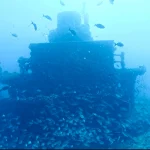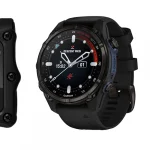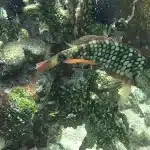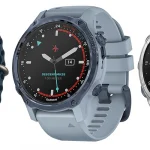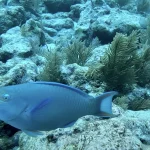Table of Contents
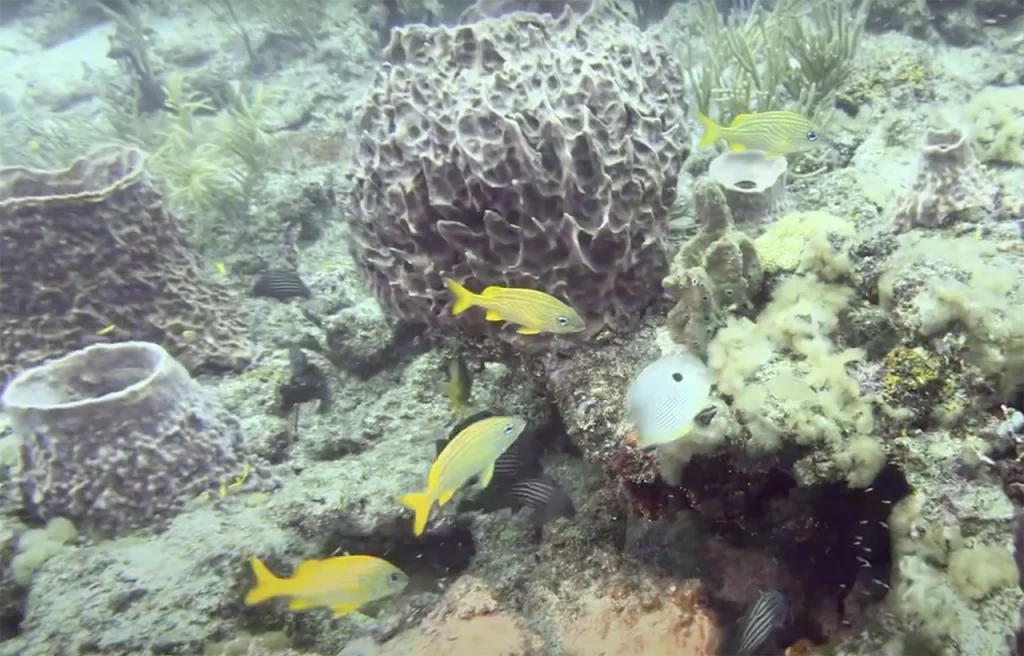
Divers describe North and South Turtle Mounds as a must-visit site in Palm Beach for its beauty, biodiversity, and enjoyable diving conditions.
Article at a Glance
- Location: Situated offshore of Breaker’s Reef in Palm Beach, Florida, these mounds are easily accessible for divers.
- Depth: The dive sites range from 42 to 62 feet, making them suitable for both beginners and advanced divers.
- Visibility: Expect visibility between 30 to 60 feet, providing clear views of vibrant marine life and coral formations.
- Marine Life: Encounter a diverse array of species, including sea turtles, grouper, hogfish, moray eels, rays, and spiny lobster.
- Best Time to Dive: The ideal diving season is from May to October during sea turtle nesting season, when turtle activity is at its peak.
- Dive Type: Enjoy drift diving in mild currents, allowing for a relaxed exploration of the underwater environment.
- Photography Opportunities: The colorful coral and abundant marine life make this site a favorite for underwater photography enthusiasts.
North and South Turtle Mounds Palm Beach
- Location: Situated on the inshore side of Breaker’s Reef, the North and South Turtle Mounds are approximately 42 feet deep at the top, descending to around 62 feet in the surrounding sand.
- Marine Life: The mounds serve as a hotspot for various marine species, including grouper, hogfish, sea turtles, spiny lobster, moray eels, and rays. Divers can expect to see a plethora of tropical fish along the ledges.
Dive Experience
- Depth: The dive sites range from 42 to 62 feet, making them suitable for divers with varying levels of experience.
- Conditions: The sites typically feature a mild current, allowing for a comfortable drift dive experience. Divers can easily transition from Breaker’s Reef to these mounds.
- Unique Features: The Turtle Mounds are characterized by their dome-shaped structure that rises about 12 to 15 feet above the surrounding sand. This unique formation provides numerous crevices and ledges for marine life to inhabit.
Recommended Activities
- Photography: Given the abundance of marine life and vibrant coral formations, these sites are ideal for underwater photography enthusiasts.
- Wildlife Watching: Divers often report sightings of large sea turtles using the mounds as resting spots, along with other marine animals like stingrays and cobia.
What Marine Life Can I Expect To See?
- Sea Turtles: These mounds are named for the large number of sea turtles that use the ledges as resting spots, making them a highlight for divers.
- Grouper and Hogfish: These species are commonly spotted around the coral formations.
- Moray Eels: Frequently found in the crevices and undercuts of the mounds.
- Spiny Lobster: Often seen hiding along the ledges.
- Rays: Including large stingrays, which are a common sight in the surrounding sandy areas.
- Tropical Fish: The area is teeming with colorful tropical fish species, adding vibrancy to the underwater environment.
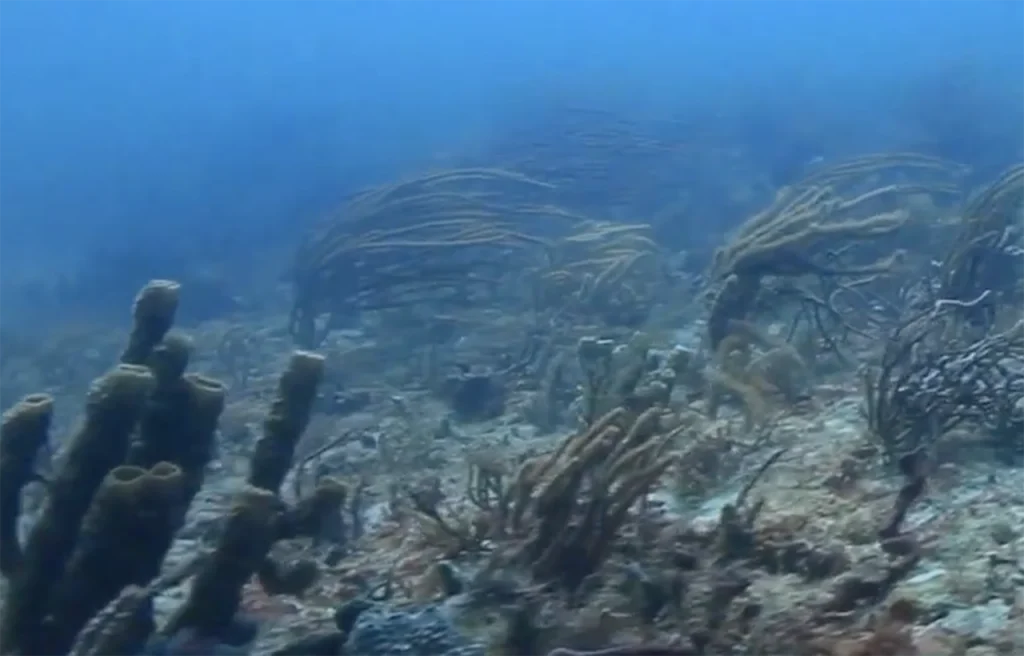
What Do Divers Say About This Site?
- Abundant Marine Life: Many divers are impressed by the variety of species, particularly the frequent sightings of sea turtles, rays, and tropical fish. The presence of larger species like grouper and hogfish also adds excitement to the dive.
- Scenic Coral Formations: The dome-shaped mounds, with their ledges and crevices, are often described as visually stunning and teeming with life.
- Relaxing Drift Dive: The mild currents in this area make it ideal for drift diving, allowing divers to explore the site effortlessly while taking in the surroundings.
- Photography Opportunities: Underwater photographers often highlight this site as a favorite due to the colorful coral and diverse marine species.
Key Information
| Category | Details |
|---|---|
| Location | Offshore of Breaker’s Reef, Palm Beach, Florida |
| Depth Range | 42 to 62 feet |
| Visibility | 30 to 60 feet |
| Skill Level | Suitable for beginners and advanced divers |
| Best Time to Dive | May to October (sea turtle nesting season) |
| Marine Life | Sea turtles, grouper, hogfish, moray eels, rays, spiny lobster, tropical fish |
| Dive Type | Drift diving |
| Photography Opportunities | Excellent for underwater photography |
| Current Conditions | Generally mild currents |
| Guided Dives Available | Yes, local dive operators offer guided tours |
Highlights of Diving This Site?
- Vibrant Marine Life: Divers frequently encounter a rich variety of marine species, including sea turtles, grouper, hogfish, moray eels, spiny lobster, and various tropical fish. The abundance of wildlife makes each dive an exciting experience.
- Unique Underwater Topography: The mounds feature a distinctive structure with depths ranging from 42 feet at the top to 62 feet in the surrounding sand. This creates numerous ledges and crevices that provide excellent habitats for marine life, enhancing the diving experience.
- Drift Diving Conditions: The site is characterized by mild currents, making it ideal for drift diving. Divers can easily glide from Breaker’s Reef to the mounds, allowing for a relaxed exploration of the underwater landscape.
- Photography Opportunities: The colorful coral formations and diverse marine life offer fantastic opportunities for underwater photography, making it a favorite spot for photographers looking to capture vibrant marine scenes.
- Accessibility: Located just offshore from Breaker’s Reef, the mounds are easily accessible for divers of various skill levels, adding to their popularity as a dive destination in Palm Beach.
My Favorite Dive Computers
I have compared the 3 top diving computers for each category to help making the right choice easier:
Iconic Spots At This Site
- Coral Formations: The mounds themselves are composed of vibrant coral structures that rise from the ocean floor, creating a stunning landscape for divers to explore.
- Turtle Resting Areas: Many divers report frequent encounters with sea turtles, which often use the mounds as resting spots. This adds a unique and memorable aspect to dives.
- Underwater Ledges and Crevices: The mounds are characterized by numerous ledges and crevices that provide habitats for various marine species, including moray eels and spiny lobster. These features make for exciting exploration opportunities.
- Drift Dive Path: The gentle currents allow divers to drift effortlessly from Breaker’s Reef to the mounds, making the journey itself an integral part of the dive experience.
- Photogenic Scenes: The colorful marine life against the backdrop of coral formations provides excellent opportunities for underwater photography, making it a favorite spot for photographers.
Environmental Conservation Efforts at North and South Turtle Mounds
- Reef Cleanup Programs: Palm Beach County participates in annual reef cleanups to remove marine debris from local coral reefs, helping to minimize indirect impacts on the reef ecosystem and associated organisms (1)(6).
- Artificial Reef Creation: Palm Beach County has created artificial reef areas to reduce pressure on natural reefs like Breakers Reef. Over 49 vessels, 110,000 tons of concrete, and 140,000 tons of limestone boulders have been deployed to create new marine habitats (3).
- Mooring Buoy Installation: Mooring buoys are being installed near natural reef sites to allow boaters, divers, and fishers to tie their vessels instead of dropping anchors onto fragile coral reefs (4).
- Reef Injury Prevention and Response (RIPR) Program: The Florida Department of Environmental Protection established this program to manage and respond to coral reef injury events (4).
- Disturbance Response Monitoring: Local organizations like the Palm Beach Zoo participate in monitoring programs to assess thermal stress on vulnerable stony coral species (5).
- Education and Outreach: Efforts are made to inform residents and visitors about responsible coastal enjoyment and reef protection (2).
- Enforcement of Regulations: Existing rules and regulations are enforced to protect the reef ecosystems (2).
- Water Quality Improvement: There are ongoing efforts to reduce land-based sources of pollution to improve water quality for reef ecosystems (2).
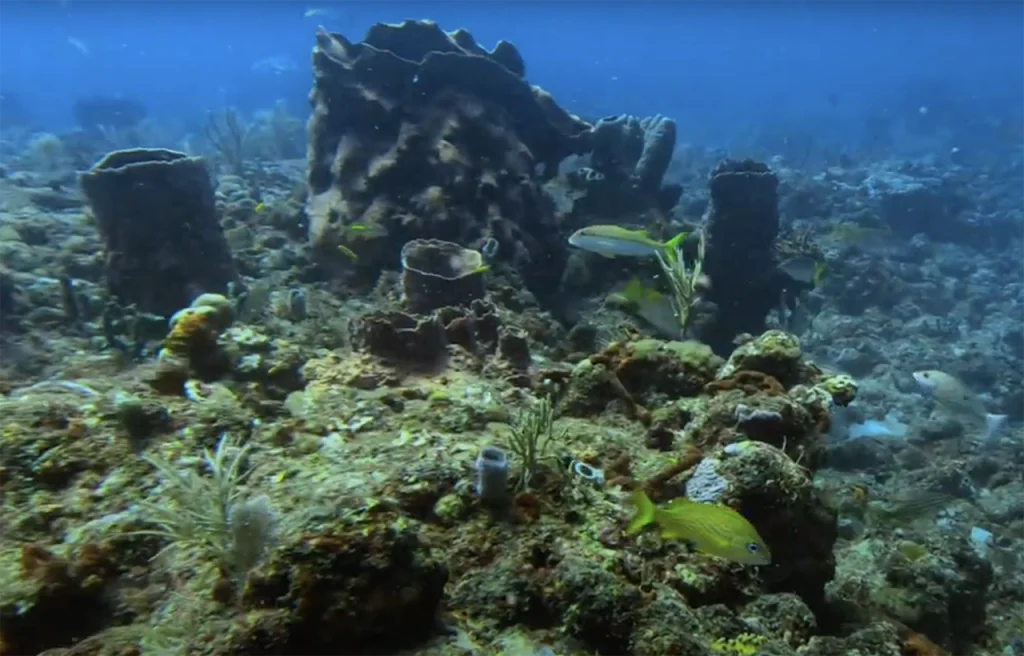
Maximizing Your Diving Experience at North and South Turtle Mounds
Timing Your Dive
- Best Seasons: Plan your dives during sea turtle nesting season (typically from May to October) for the best chance of encountering large numbers of sea turtles. This period often feels like a “turtle party” underwater due to their increased activity and presence.
Dive Conditions
- Visibility: Expect visibility ranging between 40 to 50 feet, which is generally good for spotting marine life and enjoying the vibrant coral formations.
Marine Life Encounters
- Diverse Species: Be prepared to see a variety of marine life, including great hammerhead sharks, goliath groupers, and numerous species of tropical fish. The mounds are known for their rich biodiversity, so keep an eye out for surprises like large stingrays and even occasional saltwater crocodiles.
Photography Opportunities
- Capture the Moment: With colorful corals and abundant marine life, bring an underwater camera to document your encounters. The unique topography of the mounds provides excellent backdrops for stunning photographs.
Drift Diving Experience
- Enjoy the Current: Utilize the mild currents for a relaxing drift dive from Breaker’s Reef to Turtle Mound. This allows you to cover more ground effortlessly while enjoying the scenery.
Safety Considerations
- Stay Aware: Always be mindful of your surroundings, especially when encountering larger marine animals. Maintain a safe distance and avoid sudden movements that could startle wildlife.
Local Dive Charters
- Choose Experienced Operators: Consider diving with local charters that have expertise in the area, as they can provide valuable insights about the best spots and current conditions. They often know the best times to dive for optimal wildlife encounters.
Capturing Memories at North and South Turtle Mounds: Photography Tips
Prepare Your Equipment
- Use a wide-angle lens or fisheye lens to capture the vibrant coral formations and larger marine life like turtles. These lenses allow you to shoot closer, reducing water distortion and enhancing clarity.
- Ensure your camera is set to a fast shutter speed (e.g., 1/320 or faster) to avoid motion blur caused by underwater currents or moving subjects.
- Adjust ISO settings as needed to balance exposure in low-light conditions. Higher ISO may be necessary, but prioritize sharpness over noise.
Master Buoyancy and Movement
- Practice buoyancy control to remain steady while shooting. This minimizes disturbance to marine life and prevents accidental contact with coral reefs.
- Move slowly and calmly to avoid startling animals like turtles. Let them approach you naturally for better shots.
Optimize Lighting
- Use strobes or external lights to illuminate subjects effectively, especially in deeper areas where natural light diminishes. Position strobes carefully to avoid backscatter from particles in the water (7).
- For shallow dives, utilize natural light by shooting when the sun is high for vibrant colors and better visibility (8).
Composition Tips
- Capture turtles from a front-facing angle for engaging photos. Avoid chasing them; instead, position yourself ahead of their path and let them swim toward you.
- Shoot at eye level or slightly below the turtle for a clean water background that highlights the subject, avoiding cluttered reef backdrops.
- Incorporate foreground elements like coral or reef structures to add depth and context to your images.
Timing and Patience
- Be patient with marine life. Spend time observing their behavior before attempting close-ups, allowing them to acclimate to your presence.
- Early morning dives often offer calmer waters and better visibility, ideal for photography.
Respect the Environment
- Avoid touching or disturbing marine life or coral reefs. Follow ethical photography practices to protect the ecosystem.
- Stay mindful of your surroundings, ensuring your fins or equipment don’t damage fragile habitats like coral.
Frequently Asked Questions
When is the best time to dive North and South Turtle Mounds?
The best time to dive at North and South Turtle Mounds is during sea turtle nesting season, which runs from May to October in Florida. This period offers the highest chances of encountering sea turtles resting or swimming around the mounds, as these creatures are more active during this time.
For optimal conditions, consider diving in the early morning when visibility is typically better and marine life is most active. The warm waters and calm seas during these months also make for a more enjoyable diving experience.
What is the visibility like while diving North and South Turtle Mounds?
Visibility at North and South Turtle Mounds is typically 30 to 60 feet, depending on conditions such as currents, tides, and weather. On good days, divers can enjoy clear views of the vibrant coral formations and marine life, making it an excellent site for underwater exploration and photography.
How deep are the dives at North and South Turtle Mounds?
The dives at North and South Turtle Mounds range from 42 feet at the top of the mounds to 62 feet in the surrounding sand. This depth makes the site accessible to divers of various skill levels while allowing for a rich exploration of marine life and coral formations.
Is North and South Turtle Mounds suitable for beginners?
Yes, North and South Turtle Mounds are suitable for beginners. The dives generally range from 42 to 62 feet, which is manageable for novice divers, especially those who have completed their Open Water certification.
Key Points for Beginners:
Mild Currents: The site typically features mild currents, making it easier for less experienced divers to navigate.
Rich Marine Life: Beginners can enjoy observing a variety of marine species, including sea turtles, which enhances the diving experience.
Guided Dives: Local dive operators often provide guided dives, ensuring that beginners have support and guidance throughout their underwater exploration.
Is North and South Turtle Mounds suitable for advanced divers?
Yes, North and South Turtle Mounds are suitable for advanced divers as well. While the site is accessible to divers of varying skill levels, advanced divers can enjoy additional challenges and features:
Depth Range: With depths reaching up to 62 feet, the site allows advanced divers to explore deeper areas, including the sandy surroundings and ledges that host diverse marine life.
Marine Biodiversity: Advanced divers can take full advantage of the site’s rich ecosystem, encountering larger species like grouper, rays, and even occasional sharks in deeper zones.
Drift Diving: The mild currents make it ideal for drift diving, a skill that advanced divers often enjoy for covering more ground effortlessly.
Photographic Opportunities: Advanced divers with experience in underwater photography can explore intricate coral formations and marine interactions at varying depths for high-quality shots.
Palm Beach Diving Sites
- Blue Heron Bridge
- Breakers Reef
- Flower Gardens
- Juno Ledge
- King Neptune
- Northwest Double Ledges
- South Double Ledges
- Cable Crossing
- Breakers 3rd Window
- Rons Rock
- Ballentine Reef
- Worth Avenue Pier Debris
- Playpen or Playground
- Bath and Tennis
- North and South Turtle Mounds
- Shark Canyon
- Larsens Valley
- Hole in the Wall
Reference List
- (1) The Southeast Florida Marine Debris Reporting and Removal Program
- (2) Conservation actions aim to reduce the main threats to Florida’s Coral Reef
- (3) Environmental Resources Management
- (4) Palm Beach County Reefs
- (5) Florida’s Coral Reef Conservation
- (6) DIVE AGAINST DEBRIS DATA SUBMISSION
- (7) How to photograph coral reefscapes
- (8) Underwater Tips for photographing coral

